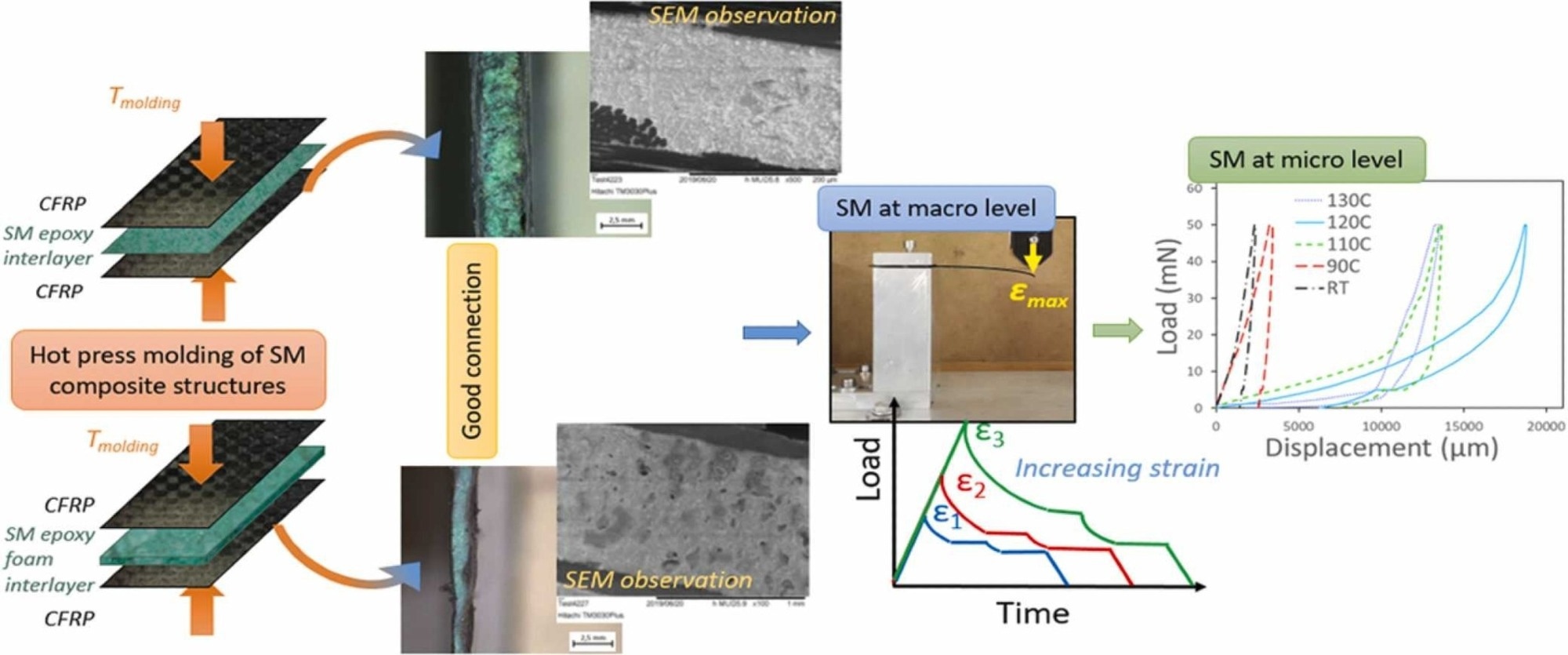First Microscopic Analysis of Aeronautical Shape Memory Composites
First Microscopic Analysis of Aeronautical Shape Memory Composites
In a study published in the journal Materials Today Communications, analysis was conducted on shape memory polymeric composites (SMPCs) made from industrial substances previously utilized in aerospace. The findings enabled the identification of recovering processes at the microscopic level crucial for shape memory capabilities at the macroscopic level.

Study: Microscopic testing of carbon fiber laminates with shape memory epoxy interlayer. Image Credit: Bellisario, D., et al (2022)
Shape-Memory Polymers – A Mainstay in the Future of Several Industries
Shape memory polymeric composites (SMPCs) belong to a class of smart material architectures that can distort and restore their original shape when stimulated.
In thermally stimulated architectures, the glass transition temperature (Tg) may be utilized to tune the fixing phase and the original shape's recovering qualities. Interest in these smart materials is high in various industries, including biomedical and aeronautical fields, where the use of actuation is critical.
Shape Memory Behavior – Nobody Does It Like Polymers
Shape memory (SM) response in carbon fiber is often obtained by adding a polymeric framework having SM features. Shape memory polymers (SMPs) may withstand greater deformations than shape memory alloys (SMAs), even when a smaller actuating force is required to regain the baseline undeformed state.
Depending on the function needed, a suitable polymeric framework might be used. Generally, thermosetting resins have superior shape memory characteristics compared to thermoplastics, and epoxy resins often give the highest performance.
Epoxies have outstanding thermal and mechanical qualities and are widely employed in all production techniques utilized in high-impact sectors such as aerospace and automotive fields.
Main Objective of the Study
The use of thermo-mechanical cycling to measure the SM qualities is a common approach for evaluating the shape memory behavior of the SMP.
The shape memory behavior and interactions of the distinct layers at the nanometric scale have yet to be studied. This research aims to thoroughly analyze these smart materials on a microscopic and a macroscopic level, with a special emphasis on the resultant mesostructures.



Comments
Post a Comment